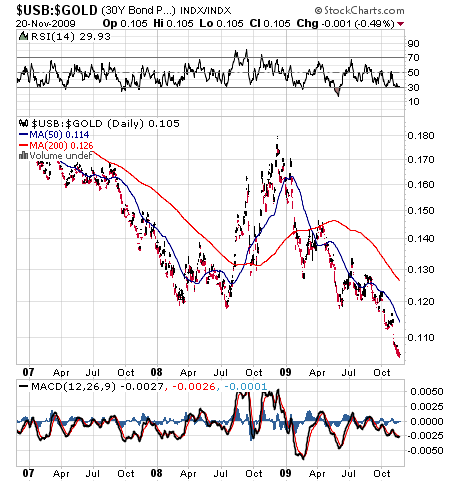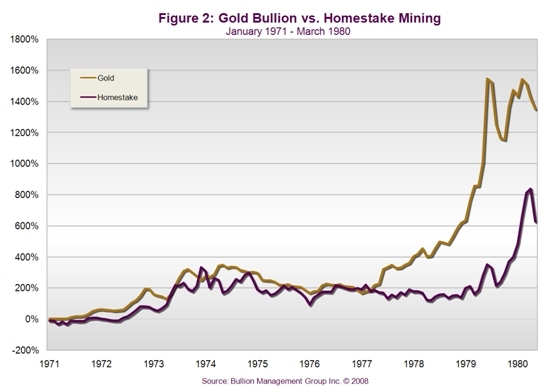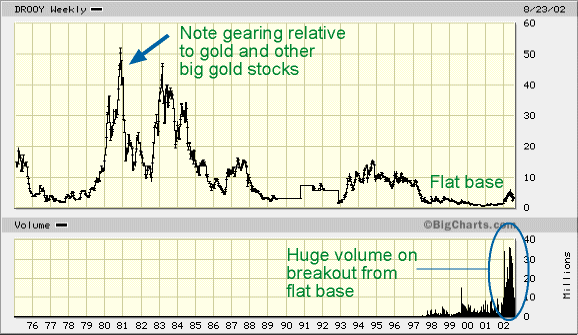Archive for November, 2009
President Jackson, while shutting down the Fed
President Andrew Jackson did not lack courage, he was
a military general. He faced an assasination attempt
for shutting down the Fed, but this is what he had to say about it:
“I too have been a close observer of the doings of the Bank of
the United States. I have had men watching you for a long
time, and am convinced that you have used the funds of the
bank to speculate in the breadstuffs of the country. When you
won, you divided the profits amongst you, and when you lost,
you charged it to the Bank. You tell me that if I take the
deposits from the Bank and annul its charter I shall ruin ten
thousand families. That may be true, gentlemen, but that is
your sin! Should I let you go on, you will ruin fifty thousand
families, and that would be my sin! You are a den of vipers
and thieves. I have determined to rout you out and, by the
Eternal, (bringing his fist down on the table) I will rout you
out. ”
—Andrew Jackson, 1834, on closing the Second Bank of the United States.
U.S. sovereign debt iceberg
The United States is effectively bankrupt, with total obligations exceeding the GDP of the World.
Widely cited for it’s AAA sovereign rating, 12 Trillion national debt is only part of the iceberg.
The bottom, invisible part is much bigger, according to U.S. Department of Treasury.
The table below illustrates matters as they were at the end of 2008.
There is no way these obligations can be paid without a major money printing,
major tax hike, a default on Social Security and Medicare, or a combination
of these. The AAA sovereign rating for USA that U.S. credit rating agencies
assign to this country is as much of a lie as their AAA subprime mortgage
debt ratings were. This big lie is still propagated, even as a major 1.725 Trillion printing
effort by U.S. Federal Reserve is currently in process.

US debt iceberg

US deficit and debt, GAAP
Injecting liquidity to inflate the derivative bubble.
It is well known mathematically that liquidity injections cause
volatility to decline. How does it do the job? By inflating the derivative bubble.
This has been our “solution” for every financial mess since 1987 crash.
It has been our “solution” in the Fall of 2008, when TED spread
(spread between 3-month libor and t-bill rates) soared to unimaginable
highs. Why did it soar? Simple, really, as a few large firms went under,
counterparty risk skyrocketed, for which Ted spread is a direct indicator.
While CDS were blamed for the crisis, naturally, these beasts are only a tiny part
of the whole universe. The real values for interest rates contracts skyrocketed
much further. Unlike CDS, however, interest rate swaps are “slow bleeders” –
they don’t bankrupt a firm right away when the bet goes bad, rather, they
cause insolvency and large payments over time.
A little problem here – the derivative Ponzi scheme inflated 10-fold during
the last decade due to these policies and now stands at 10 times the GDP
of the World. Thus, bailing it out in 2008 required enormous liquidity injections.
About 23 Trillion in government guarantees, loans, and direct printing for the US,
or 1.5 times US GDP, by some estimates.
Instead of being the lender of last resort for this Casino, don’t we need to just let
the gamblers go broke and go home, then deal with the economic mess that results?
Yep, we do. But that requires political courage because of incredible mess
the blowup will cause, and that’s not what we did.
BIS derivative report for June 2009 is out.
Highlights? It “worked” yet again
1. Volatility declined.
2. Markets soared as a result.
3. Notional values increased, except for CDS market, where they dropped
4. Real values declined (expected with decline of volatility)
Resume: Derivative bubble, the biggest bubble of them all, inflated again to 605
Trillion dollars notional. Note that this is only a part of the derivative universe.
The other, much smaller part, trades on the exchanges.
Next time the mess will be even bigger.
Key developments:
•notional amounts of all types of OTC contracts rebounded somewhat to stand at $605 trillion at the end of June 2009, 10% above the level six months before,
•gross market values decreased by 21% to $25 trillion,
•gross credit exposures fell by 18% from an end-2008 peak of $4.5 trillion to $3.7 trillion,
•notional amounts of CDS contracts continued to decline, albeit at a slower pace than in the second half of 2008 and
•CDS gross market values shrank by 42%, following an increase of 60% during the previous six-month period.
The “new bull market” – the rally goes bye bye in real terms
Both stocks and bonds are now losing value in real terms due
to the dollar decline. US treasury bonds lost value all year relative
to gold, US stocks started to decline in real terms in August
after a 5-month rally.

SP 500 in gold Oz

30 year Treasury bond in gold
Charts of gold mania: Do equities always lead?
It seems to be a common assumption among precious metals investors that
the equities (GDX, HUI, GDXJ, XAU) always lead gold price. These charts
of the previous mania illustrate that this assumption is not always correct.
You can see below that the stock of Homestake mining and DRD gold did not take off
until the gold mania went into overdrive in 1979-1980. In early 1979 Drooy was
actually DOWN as much as 80% from 1975. The equities did catch up with the metal
in 1979, and then some.

G20 leaves door open for fresh pressure on dollar
By Andrew Torchia – Analysis
LONDON (Reuters) – The U.S. dollar may come under renewed pressure
from emerging market currencies and the euro after a meeting of the world’s top
finance officials failed to take concrete action on rebalancing global money flows.Finance ministers and central bank governors of the Group of 20 major countries,
meeting in Scotland at the weekend, launched a “framework” in which they will
discuss how to reduce trade and savings imbalances between nations.But their communique talked only in general terms about rebalancing economies,
and implied they might not agree on specific policies for individual countries to
adopt before the end of next year at the earliest.The result may be a continuation of heavy fund flows into emerging markets,
boosting currencies there. And central banks intervening to slow currency
appreciation may keep investing much of the money they obtain in the euro,
pushing up that currency too.“We’re probably looking at fresh dollar weakness in the short term” in the
wake of the G20 meeting, said Kenneth Broux, senior markets economist at Lloyds TSB.
Charts predict risk of fully-fledged dollar crisis
Robin Griffiths, technical strategist at Cazenove Capital:
“The dollar trade-weighted is clearly in a downtrend, it does have days when it rallies,
but it’s basically persisting downwards and each potential support level breaks”
“With US interest rates expected to stay near zero for some time, the greenback has
now taken over from the yen’s 20-year reign as the main carry-trade currency”
“What that tells you is that many people wanting to invest anywhere go and borrow some
dollars to do it with. Because they’re institutionalized in the opinion that — by the time
we pay this thing back it will be worth less”
“That’s extremely unhealthy and if this trend goes much further, like taking out the low
of one-year ago … we’ll have a fully fledged dollar crisis and that will knock on across all
markets”
‘I Expect a Currency Crisis or Semi-Crisis’: Jim Rogers
The worst of the economic crisis is not over and a currency crisis can happen this
year or the next year, because the problem of too much debt in the system has not
been solved, legendary investor Jim Rogers told CNBC Monday.The current recovery is just a consequence of the fact that consumption fell so
dramatically in 2008 and people have to buy things they need in 2009, Rogers told
“Worldwide Exchange.”“How can the solution for debt and consumption be more debt and more consumption?
How can that be the solution to our problems?,” he said.Video: Jim Rogers, CEO of Rogers Holdings, told CNBC Monday that when Lehman
Brothers failed he thought “thank goodness they’re finally letting somebody collapse.”“I would expect there to be a currency crisis or a semi-crisis this fall or next year.
It’s crony capitalism, Bernanke and Greenspan have brought crony capitalism to America …
but that’s not going to solve the world’s problems,” Rogers added.There are still “gigantic amounts of horrible, horrible debt that hasn’t been dealt with”
in Central Europe, while hopes that China will pull the world out of recession are overblown,
according to Rogers.“China saved up a lot of money for a rainy day, it’s raining and it’s spending it,”
he said. “But China cannot pull out America or India or Europe from all this. Their
economy is a 10th of the US. Hallelujah, let them do good things but they’re not
going to save the world.”The Federal Reserve has tripled its balance sheet and the US government’s debt
skyrocketed, which may cause currency problems next year, while protectionist
tendencies have already started, he warned.“We’re going to have some serious problems in currency markets, we’re going to
have serious problems in the world markets if we see protectionism rising and rising again,
” he said.
Has gold gone manic?
The NYT article makes a case for a global gold frenzy.
Inside the Global Gold Frenzy
HERE, in a corner of Switzerland where Italian is spoken and roughly one-third
of the world’s gold is refined into bars and ingots, business is booming. Every
day, bangles, bracelets and necklaces arrive in plastic bags — from souks in the
Middle East, from pawn shops in Asia and from corner jewelers in Europe and
North America.“It could be your grandmother’s gold or the gift of an ex-boyfriend,” said Erhard
Oberli, the chief executive of Argor-Heraeus, a major refiner here that processes
roughly 400 tons of gold a year. “Gold doesn’t disappear.”Amid a global frenzy fed by multibillion-dollar hedge funds, wealthy speculators
and governments all rushing to stock up on the precious yellow metal, the price
of gold briefly surpassed $1,100 an ounce on Friday, a record high.Long considered the ultimate refuge for nervous investors, gold has climbed
as the dollar has steadily weakened, budget deficits have expanded in the
United States and Europe, and central banks have continued to pump trillions
of dollars into weak economies, creating fears of another asset bubble that
will ultimately pop.“It’s not that gold has changed, but gold buyers have changed,” said Suki
Cooper, a precious-metals strategist for Barclays Capital. “It’s a structural
shift we’re seeing on the investing side, from Asian central banks right down
to individual investors buying ingots and coins.”……………………………………….
You only need to look at gold supply and demand statistics from World Gold Council
to discover a lie. As you can see, bar hoarding has been roughly equal to buying
gold ETF, which for the most part is GLD. The net assets in GLD are just 35 billion,
much lower than a single large cap stock in the US stock market – say, Apple or
Google, let alone an ASSET CLASS, and that’s accumulated demand since GLD started
to trade, not just 1 year. Given that GLD is rougly equal to bar hoarding, the total
investment demand in gold for the past decade is of the order of 70 billion, or about 0.1% of the
World GDP or global stock market cap. Sure, gold can drop, but it is nowhere
near manic. See ya at $20,000 per Oz!
How did we deal with the Economic depression prior to the Great Depression?
The Panic of 1837
Lecture delivered before the Sunday Lecture Society, May 7, 1876
by John Wentworth
The history of Chicago furnishes one with a complete history of an irredeemable
papermoney system. Emigration was fast tending westward in 1835. Government
land was $1.25 per acre. The emigrants had little or no money, and would purchase
land on credit at greatly advanced prices. Eastern speculators flocked here and took
advantage of this condition of things. The government money received for lands would
be deposited in the banks, credited to the government, and then reloaned back to
speculators. Thus the government had credits in banks to more than the amount of their
capital, and their assets consisted almost entirely of the notes of western speculators.
The government was out of debt, and had no use for its surplus, which was forming the
basis of those large speculative loans, and men became even more excited and reckless
than were the land operators here in Chicago at the time of the recent panic. Besides,
money was taken from every branch of business to invest in these western speculations.
The President of the United States had no power to stop the sales of lands or to limit
bank discounts. He saw the immediate necessity of arresting this condition of things,
and he had no other way to do it than to issue an order that nothing but gold and silver
should be received for the public lands. According to an invariable law, a redundancy of
paper had driven the precious metals out of the country, and the banks had not the
specie wherewith to redeem their bills, which were fast being presented to obtain
land-office money. The banks all failed, and corporations and individuals issued
certificates of indebtedness, which were interchanged as currency. States, counties,
and cities paid their debts in warrants upon an empty treasury. The canal commissioners
paid contractors in scrip, and the contractors paid their laborers in a lesser scrip,
redeemable in the scrip of the commissioners.
Nearly every man in Chicago doing business was issuing his individual scrip, and the city
abounded with little tickets, such as “Good at our store for ten cents,” “Good for a
loaf of bread,” Good for a shave,” “Good for a drink,” etc., etc. When you went out to
trade, the trader would look over your tickets, and select such as he could use to the
best advantage. The times for a while seemed very prosperous. We had a currency that was interchangeable, and for a time we suffered no inconvenience from it, except when we
wanted some specie to pay for our postage. In those days it took 25 cents to send a
letter east.
But after a while it was found out that men were over-issuing. The barber had
outstanding too many shaves; the baker too many loaves of bread; the saloon-keeper
too many drinks, etc., etc. Want of confidence became general. Each man became
afraid to take the tickets of another. Some declined to redeem their tickets in any way,
and some absconded. And people found out, as is always the case where there is a
redundancy of paper money, that they had been extravagant, had bought things they
did not need, and had run in debt for a larger amount than they were able to pay.
Of course, nearly everyone failed, and charged his failure upon President Jackson’s
specie circular. In after times, I asked an old settler, who was a great growler in
those days, what effect time had had upon his views of General Jackson’s circular.
His reply was that General Jackson had spoiled his being a great man. Said he, “I
came to Chicago with nothing, failed for $100,000, and could have failed for a million,
if he had left the bubble burst in the natural way.”
“Reiniscensces of Early Chicago”, The Lakeside Press, Chicago, 1912

